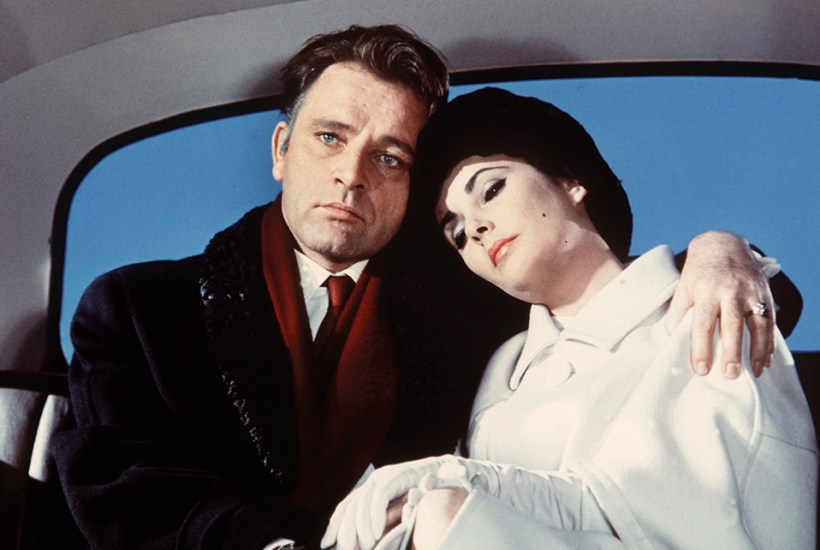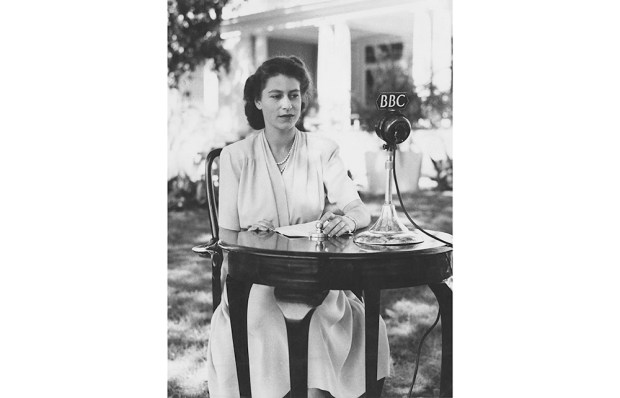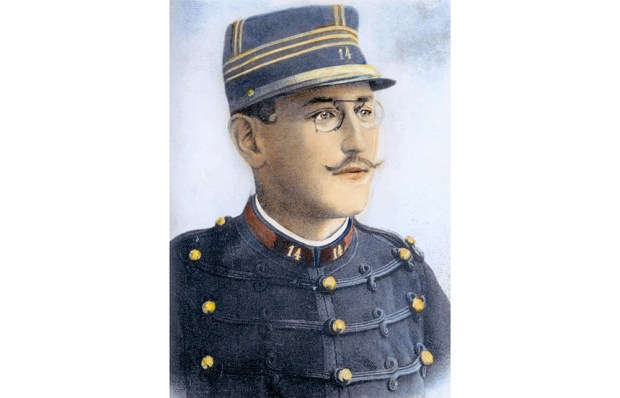‘To begin at the beginning,’ intones Richard Burton with a voice like warm treacle at the start of the 1971 film Under Milk Wood. It’s hard to imagine an actor more obviously influenced by his own beginnings. The epigraph to this double biography is ‘The damp, dark prison of eternal love’, a line borrowed from Quentin Crisp. And if that’s an accurate assessment of Burton’s on-off-on-again relationship with the actress Elizabeth Taylor, it’s an even better summary of his childhood in Wales.
Born Richard Walter Jenkins to a barmaid mother and a coal miner father (a ‘12-pints-a-day man’ who sometimes disappeared for weeks on end to drink and gamble), as a teenager he attempted a fresh start by moving in with a teacher named Philip Burton. This Svengali-like figure swiftly became his legal guardian, giving him his own surname and nudging him towards an acting career. (He may also have persuaded him into his bed.) Burton soon outgrew his new father figure – after he went to Hollywood, he acquired a reputation as a ‘sexually inexhaustible’ womaniser – but his past continued to trail him like a shadow.
Taylor found it equally hard to escape her upbringing. A child star in films such as National Velvet (1944), although she later enjoyed even greater fame as an adult actress, in some ways she never really grew up. ‘I have the body of a woman, the emotions of a child,’ she admitted, and for the rest of her life she was ‘a bundle of appetites’ for food, alcohol, pills, clothes, attention and the largest and sparkliest jewels that money could buy. It wasn’t always her own money: she also collected rich husbands, who were expected to treat her as a strange hybrid of sex goddess and Disney princess, and were rapidly discarded when she tired of them. The only one she couldn’t shake off was Burton. ‘We are stuck like chicken feathers to tar,’ she explained, which made their relationship sound less like a love match than a form of shared punishment.
Their first encounter on the set of Cleopatra (1963), at the time the most expensive film ever made, wasn’t especially promising. ‘You’re much too fat,’ Burton told her, ‘but you do have a pretty face.’ Not the slickest chat-up line perhaps, but that hardly seemed to matter. ‘I get an orgasm just listening to that voice of his,’ Taylor dreamily confessed, and before long they were conducting an affair that was soaked in booze and punctuated by violence on both sides: a punch-drunk romance. ‘I must from this enchanting queen break off,’ Antony urges himself in Shakespeare’s Antony and Cleopatra, but it soon became clear that Burton and Taylor were incapable of following this advice with regard to each other. Seen from one angle, it was among the greatest love stories of all time; from another, it was a suicide pact carried out in relentless slow motion.
Roger Lewis’s title comes from a 1962 letter published by the Vatican which rebuked Taylor as ‘an avaricious vamp who destroys families and devours husbands’, and accused the couple of ‘erotic vagrancy’. It was a surprisingly far-sighted claim, Lewis suggests, because trying to follow the couple’s movements over the following years is ‘like determining the random peregrinations of… sprites pissed on margaritas’.
They were usually, and expensively, on the move. When Taylor flew to Russia to make The Blue Bird in 1975, she took 2,800 lb of excess baggage with her. Previously, when Burton was in London making Where Eagles Dare (1968), a 200-tonne ship was rented and moored near Tower Bridge for the exclusive use of the couple’s quarantined dogs and cats. Their own luxury yacht, the Kalizma, had walls that were adorned with Monets, Van Goghs and a Picasso, and it was accompanied by an entourage that included lawyers, hairdressers and assorted hangers-on. ‘I always knew when this tribe was coming my way,’ recalled the film director Franco Zeffirelli, ‘because there was always the tell-tale chink of gold bracelets and necklaces.’ Yet for all their jet-set lifestyle, they could never escape from themselves. Whether the later films they made together were advertised as intimate domestic tragedies like Who’s Afraid of Virginia Woolf? (1966), or slapstick comedies like The Taming of the Shrew (1967), they all appeared to be variations on their own relationship, as if they were caught up in a loop of film that was doomed to repeat itself forever.
There’s no shortage of good stories about the couple, and Lewis gleefully reels them off: the way they lashed out at each other when they weren’t kissing and making up (Burton’s nicknames for Taylor included ‘Miss Tits’ and ‘Monkey Nipples’; Taylor summed up Burton as ‘a boozed-up, burned-out Welshman’); the jokes they attracted (Joan Rivers: ‘Liz isn’t fat? Her blood type is Ragu’); the threat of camp that always hovered around their antics, and was thrown into sharp relief when Cleopatra’s abandoned sets and costumes were recycled by the thrifty producer Peter Rogers for Carry On Cleo (1964).
Lewis claims that he was drawn to the couple as a subject because they are ‘like posters of palaces and golden domes in a travel agency window, advertisements for a land of smiles, a place which will stay just out of reach’. The result is a 750-page biography in which he spends his nose firmly pressed up against the glass. His book attracts adjectives rather as a stray dog might attract fleas: compelling, chaotic, overwhelming, self-indulgent, hilarious and wildly eccentric. To borrow his assessment of the way a teenage Taylor wrote about a fictional chipmunk called Nibbles, the whole thing is ‘uninhibited and sincere, and not a little mad’.
His main approach is biography as bricolage, in which lyrical assessments of the films (Cleopatra is ‘a dappled patchwork quilt, which seems to undulate on a spicy breeze’) are punctuated by spiky one-liners: Paul Scofield’s voice is ‘the honk of a pregnant camel’; Bette Davis looks like ‘an angry Pekingese in more or less human shape’. Clearly he hasn’t learned much from a previous controversy in which he wrote ‘You can always spot a lesbian by her big thrusting chin’, as this book ripples uneasily with homophobic attempts at humour, whether he is describing a member of the Cleopatra crew as ‘the nelly in charge of wigs’ or explaining why Burton stopped having sex with men: ‘Made his eyes water, no doubt.’
More interesting is the vagrant structure of the book itself, which wanders around unpredictably in time and tone, full of narrative digressions and non sequiturs. Lewis writes that he was ill during the long period he spent on research, recalling the ‘feverishness’ of one hospital stay when he was hooked up to a morphine drip that produced ‘weird, inflamed thoughts’. His own prose achieves similar results, reading less like a conventional biography than a fever dream of Hollywood. At its best, it is as if Lewis has joined Burton and Taylor for an extended ménage à trois on the page. At its worst, it is like being stuck in a lift with someone who decides to share their secret obsession with you, and hours later is still talking.
Got something to add? Join the discussion and comment below.
Get 10 issues for just $10
Subscribe to The Spectator Australia today for the next 10 magazine issues, plus full online access, for just $10.
You might disagree with half of it, but you’ll enjoy reading all of it. Try your first month for free, then just $2 a week for the remainder of your first year.














Comments
Don't miss out
Join the conversation with other Spectator Australia readers. Subscribe to leave a comment.
SUBSCRIBEAlready a subscriber? Log in